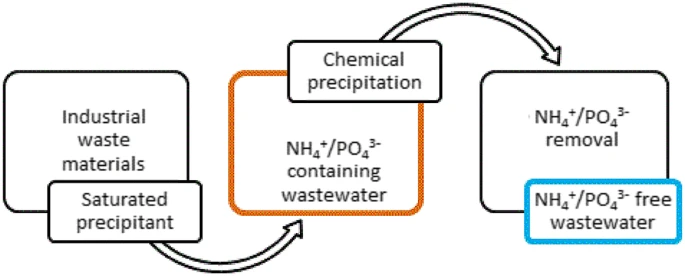Ammonia is a chemical compound that serves as a refrigerant, cleaner, and fertilizer in various industries. With so many different uses, its global production is expected to reach 290 million metric tons by 2030.
However, this widespread use comes with a critical caveat: ammonia’s hazardous properties. That’s why it’s crucial for businesses to handle ammonia disposal in a safe way.
But what are the steps of the ammonia disposal process, and what regulations do you need to follow?
Let’s delve into the details of how you can manage and dispose of ammonia responsibly.
Key Takeaways
- When disposing of ammonia, always dilute it with water and, if necessary, neutralize it with suitable materials to ensure safety.
- Whether on a household or industrial level, proper handling of ammonia, including wearing protective gear and maintaining proper ventilation, is crucial.
- If not done right, ammonia disposal can have severe negative consequences on the environment and public health.
- Complex ammonia disposal processes, especially on an industrial scale, require professional expertise to ensure 100% safety.
Ammonia Disposal Overview
Ammonia is composed of one nitrogen and three hydrogen atoms. At room temperature, it’s a colorless, pungent-smelling gas. However, it’s typically encountered as a liquid under pressure or as a solid when subject to extreme cold.
This versatile chemical finds applications in:
- Agriculture: Ammonia as a fertilizer helps enhance crop yields, meeting the demands of a growing global population.
- Refrigeration: It serves as an efficient and environmentally friendly coolant.
- Manufacturing: It’s used for creating cleaning products, textiles, and explosives.
However, ammonia toxicity is considered hazardous as it can cause serious health and environmental risks.
Because of this, regulatory entities in the United States (such as EPA and POTW) closely monitor its production, usage, and disposal.
Sources and Site Evidence
Understanding the primary sources and site evidence of ammonia is vital for effective disposal and regulatory compliance. Let’s take a closer look:
Sources
Ammonia can be found in various sources like:
Impoundments
Ammonia can accumulate in impoundments or holding ponds, commonly used in agriculture and industrial processes. Regulations demand careful monitoring to prevent runoff into water bodies, as ammonia runoff can harm aquatic ecosystems and impact water quality.
Municipal Waste Treatment Plants
These plants handle sewage and wastewater from households and industries.
Ammonia removal from wastewater has to abide by strict guidelines in order to meet EPA discharge limits. These guidelines include the implementation of specialized processes and technologies to effectively remove ammonia and meet stringent discharge limits.
Septic Seepage and Failed Package Plants
Improperly maintained septic systems can result in ammonia leaching into groundwater, posing risks to drinking water. To minimize these risks, regulatory standards are set in place to ensure the proper installation, maintenance, and monitoring of septic systems and package treatment plants.
Industrial Point Source
Industries like chemical manufacturing release ammonia emissions.
To minimize their environmental impact, the EPA has implemented rigorous regulations that require these industries to establish stringent control measures and reporting mechanisms for their ammonia discharges.
Manure Application
Ammonia from animal waste can volatilize into the air or leach into soil and water. This dual threat to the environment has led to comprehensive regulations that guide farmers on the timing and method of manure application.
This sets limits on application rates to prevent overloading, and the use of technologies and additives designed to reduce ammonia volatilization.
Farming and Agriculture
Concentrated animal feeding operations, aquaculture, and high plant production contribute to ammonia release, mainly through animal waste and fertilizer use.
Government regulations aim to minimize ammonia emissions and runoff, protecting ecosystems and ensuring sustainable agricultural practices.
Site Evidence
Understanding the site evidence of ammonia contamination is crucial for effective waste management. Here are some key indicators:
Slow-moving Water
Stagnant or slow-moving water bodies can indicate ammonia contamination. Reduced water flow disrupts ecosystems and raises concerns for aquatic life. Monitoring agencies, such as the EPA, scrutinize ammonia levels in affected waters.
Presence of Organic Wastes
Ammonia often accompanies organic waste in water sources. Whether from agricultural runoff or industrial discharges, the coexistence of ammonia and organic matter signals potential contamination.
EPA guidelines and state regulations target these sources to mitigate ammonia pollution.
Suspended Solids
Ammonia can bind with suspended solids, leading to water cloudiness. This impacts water quality and aquatic habitats. To prevent these adverse effects, the Clean Water Act imposes controls on pollutants like ammonia to maintain water clarity.
Alkaline Water and Foul Odor
Ammonia contamination may elevate water alkalinity and introduce unpleasant odors. The EPA focuses on limiting ammonia emissions to prevent odor-related concerns and uphold community well-being.
Health Risks
If not handled properly, ammonia can cause adverse health effects on both humans and animals, including:
Respiratory Problems
Inhalation of ammonia vapors can lead to respiratory distress. Prolonged exposure may result in chronic conditions like bronchitis or aggravate preexisting respiratory issues.
Protecting air quality in ammonia-handling areas is paramount to prevent these risks.
Did you know: An ammonia leak occurred at the Tyson Foods poultry processing plant in Rogers, Arkansas, in 2014. The toxic fumes resulted in respiratory problems (including difficulty breathing and swallowing) in 18 employees who were immediately hospitalized.
Skin and Eye Irritation
Direct contact with ammonia solutions can cause skin irritation, leading to redness and discomfort. Exposure to ammonia fumes may also result in eye irritation, causing redness, tearing, and discomfort.
Protective gear and safety measures are essential to mitigate the negative effects of ammonia on the body.
Headaches and Dizziness
Ammonia exposure can trigger headaches, dizziness, and nausea. These symptoms often arise in poorly ventilated spaces where ammonia concentrations build up. Adequate ventilation is critical in minimizing these health issues.
Stress and Behavioral Problems
Livestock and animals in proximity to ammonia sources may experience stress and behavioral problems such as disorientation and aggression. This can manifest as reduced productivity in farming operations. Employing ammonia management strategies can alleviate these concerns and enhance animal well-being.
Environmental Impact
Ammonia can also have a negative impact on the environment if not handled properly. For example, it affects:
Global Warming
Ammonia production contributes to greenhouse gas emissions, primarily in the form of carbon dioxide and nitrous oxide.
Nitrous oxide is a potent greenhouse gas that has a huge impact on global warming. The ammonia industry continually strives to reduce these emissions through advanced technologies and sustainable practices.
Climate Change
Ammonia emissions, when released into the atmosphere, can lead to climate change.
Altered weather patterns, rising temperatures, and shifting ecosystems are among the repercussions. These changes necessitate stringent environmental regulations to curb ammonia-related climate impacts.
Aquatic Life Disruption
Ammonia runoff from agricultural and industrial sources can infiltrate water bodies, leading to harmful consequences for aquatic life. This includes:
- Algal blooms
- Oxygen depletion
- Fish kills
Soil Degradation
Soil exposed to excessive ammonia can suffer from degradation. That’s because ammonia can disrupt nutrient balance and may render land unsuitable for agriculture.
Why is this the case?
Ammonia can pull out water from plant leaves, leaving them dry. While this does not affect the roots of the affected plants, it can significantly reduce their yield.

How to Dispose of Ammonia Safely?
To avoid detrimental health and environmental risks, both businesses and households need to follow safe ammonia treatment and disposal processes. Let’s check out how to dispose of this chemical liquid:
Household Level
Here’s how you can dispose safely of this liquid waste at home:
- Dilute ammonia with water: Begin by diluting concentrated ammonia with water. This is a crucial safety measure, as disposing of concentrated ammonia can be dangerous.
- Turn on the water faucet: Ensure that you have access to plenty of running water for dilution. Diluting ammonia with running water is the safest method.
- Pour ammonia down the drain: With the water faucet on, gently pour the diluted ammonia down the sink. Make sure there is more water than ammonia to ensure proper dilution and protect your plumbing.
- Use caution: While pouring ammonia, wear a mask to protect against fumes, and turn on the exhaust fan or open windows to ventilate the area.
- Post-disposal sink cleaning: After disposing of the ammonia, thoroughly wash the sink to remove any residue. Wipe the sink with a clean, dry towel to ensure all ammonia is gone.
If you have a septic tank, however, it is safer to neutralize ammonia rather than pouring it down the drain. Here’s how you can do that:
- Use neutralizing mixture: Mix ammonia with dry sand, cat litter, and baking soda in equal parts. Sprinkle this mixture over spilled ammonia until it’s completely absorbed.
- Collect the mixture: Use gloves and a plastic spoon to collect the mixture containing ammonia. Place it in an empty container and dispose of it promptly to prevent any harmful reactions.
- Dispose of the container: Remove any remaining ammonia from the container and rinse it thoroughly with clean water. Then, you can either recycle the container (if it is recyclable) or place it in your outdoor trashcan.
Industrial Level
In cases of leakage, you can follow this step-by-step industrial ammonia disposal process:
- First, check if ammonia concentration exceeds local authority limits. If it does, you can lower it by applying water to the leakage site.
- Collect the water/ammonia mixture in suitable containers.
- Neutralize with hydrochloric acid or diluted sulfuric acid to a pH of 7 to 8 before releasing it into the sewer system.
- If you have any questions, consult with the plant operator. Also, make sure not to release the liquid to surface water.
In cases of plant shutdowns or if you want to reduce the refrigerant charge, you can follow this hazardous liquid waste disposal process:
- Remove the ammonia in vapor form and conduct it to a disposal plant.
- The disposal plant’s combustion chamber should be heated at approx. 700°C and supplied with air.
- Combustion breaks down NH3 into nitrogen and oxygen, eliminating nitrosyl compounds and creating C, F, Cl, or S compounds.
- Ammonia then dissociates into water vapor and nitrogen, with waste air being invisible and odorless.
Note: This method is suitable for disposing of 800 kg (about 1763.7 lb) or more of ammonia.
Impact of Improper Ammonia Disposal
Preventing improper ammonia disposal can help us reduce its negative impact on the environment and public health.
On the Environment
Improper ammonia disposal can result in ammonia-rich effluents entering water bodies, causing water pollution. This can harm aquatic ecosystems, leading to disruptions in the natural balance of water systems.
Additionally, ammonia emissions into the atmosphere contribute to air pollution and can exacerbate global warming and climate change.
On Health and the Economy
Improper disposal poses significant health risks to individuals who encounter ammonia, causing respiratory problems, skin and eye irritation, headaches, and more.
Beyond health issues, the economic impacts of ammonia pollution include the cost of cleanup and remediation efforts, decreased property values in polluted areas, and potential harm to industries reliant on clean water sources.
Conclusion
By adhering to safe disposal practices, we can mitigate the negative impacts associated with ammonia. From dilution and neutralization to careful handling, responsible ammonia disposal ensures a cleaner, safer future for all.
For comprehensive hazardous and liquid waste management solutions, turn to Shapiro. With a nationwide network of qualified partners and decades of experience, we excel in handling the most challenging waste disposal tasks, including ammonia disposal.
Contact us today to learn more about how we can meet your waste management needs.
Baily Ramsey, an accomplished marketing specialist, brings a unique blend of anthropological insight and marketing finesse to the digital landscape. Specializing in educational content creation, she creates content for various industries, with a particular interest in environmental initiatives.



